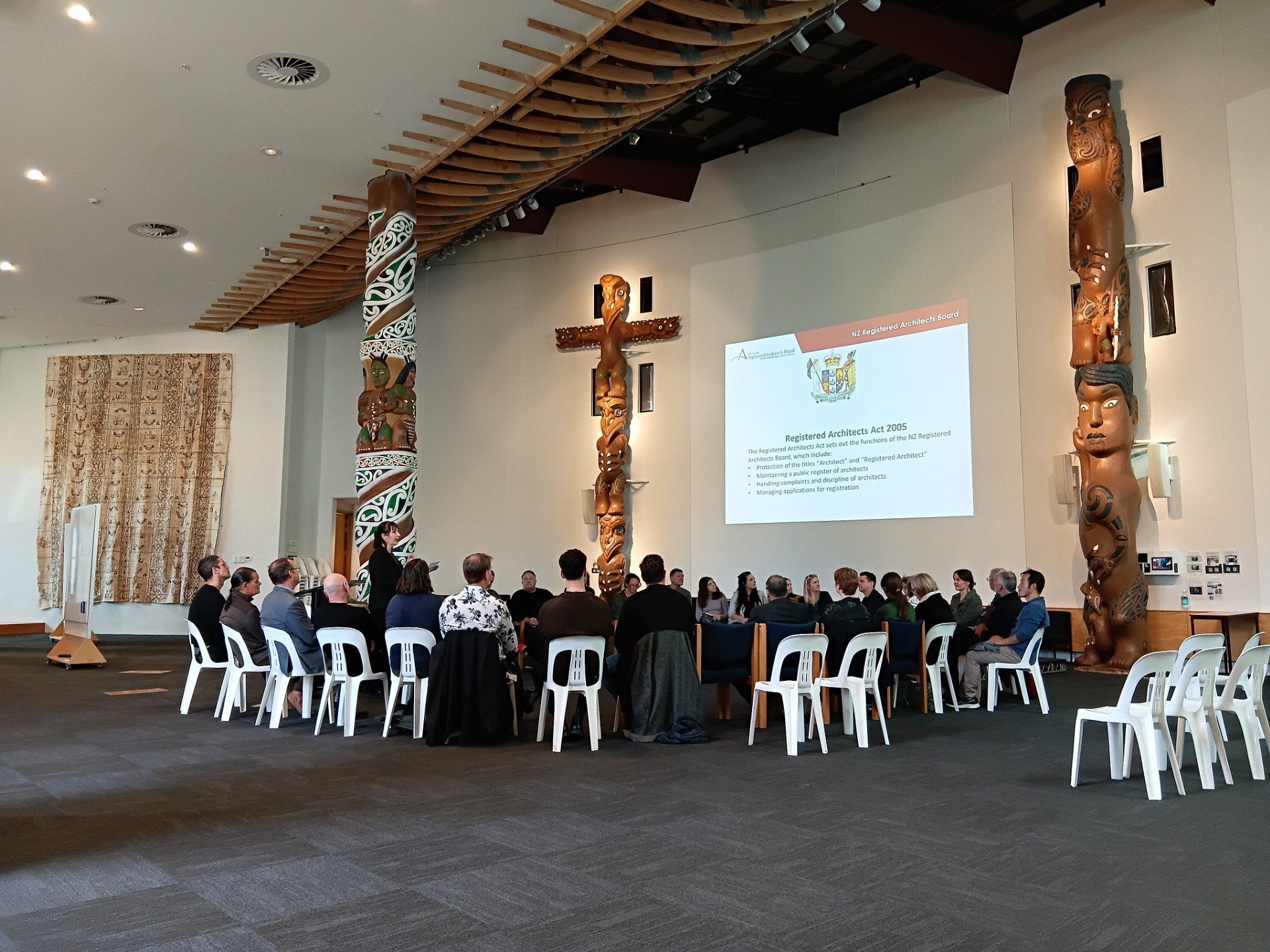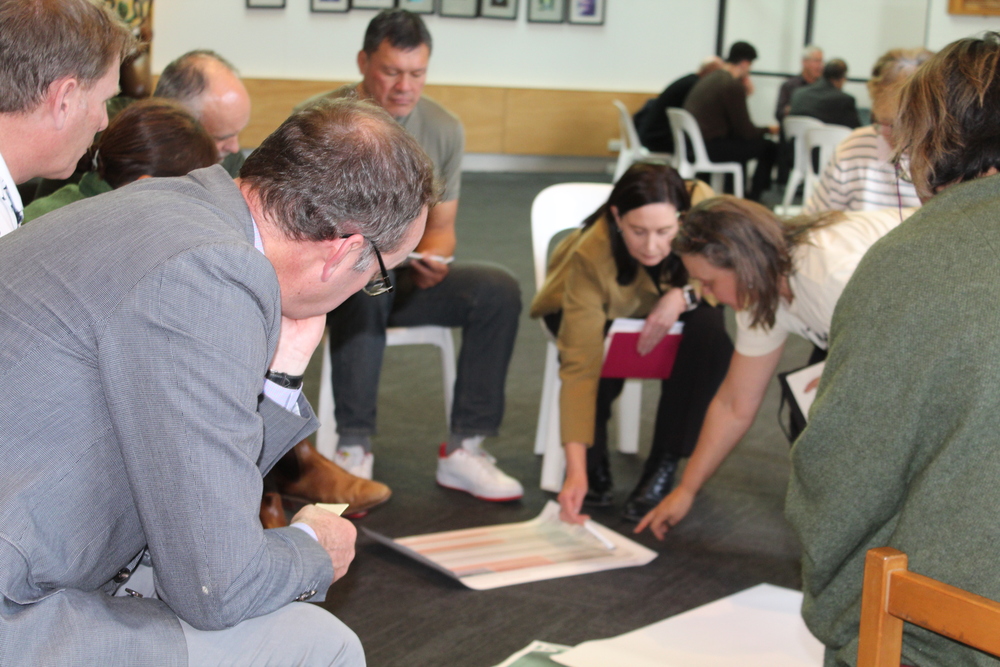Ara hosts key hui on cultural competency in architecture
14 July, 2025
National consultation advances cultural inclusion in architectural registration standards

NZRAB Chief executive Judith Taylor offers opening remarks
Ara Institute of Canterbury recently hosted a pivotal hui as part of a national consultation aiming to reshape professional architecture registration in Aotearoa.
The hui was a collaboration between the New Zealand Registered Architects Board (NZRAB) and Ngā Aho, which supports the design aspirations of Māori and indigenous communities. It was the latest in a consultation series focused on embedding cultural competency within the National Standard of Competencies for Architects.
The process invites feedback on the ethical and meaningful integration of te ao Māori, mātauranga Māori, and indigenous design principles into architectural practice.
Insights from stakeholders will inform a new set of performance criteria and explanatory notes accompanying the national competency standards.
The initiative builds on the legacy of Te Kawenata o Rata, a 2017 covenant between Te Kāhui Whaihanga NZIA and Ngā Aho that formalised their commitment to cooperation and cultural inclusion in the profession.
Held at Ara’s Te Puna Wānaka in Te Waipounamu, the hui brought together influential voices from across the architectural community to provide expertise and input into what promises to be transformational change for practice in Aotearoa.
Ara Principal Academic Staff Member for Architecture Bernadette Muir led the organisation of the southern event, ensuring the presence of key contributors and that participants were well briefed.
Among the notable attendees were current New Zealand Institute of Architects (NZIA) president Huia Reriti and Perry Royal, son of the late Wiremu Royal - the architect behind Te Puna Wānaka and designer of Rāpaki marae and papakāinga housing.
Muir said their presence underscored the venue’s own rich whakapapa and architectural heritage. “I was delighted to draw on longstanding relationships in the sector and extend invitations to key players who were equipped to make valuable contributions,” she added.


The hui was further supported by a distinguished group of Māori and Pasifika architects and design leaders, including Elisapeta Heta, Jade Kake, Whare Timu, Keri Whaitiri, Fleur Palmer and Te Marino Lenihan.
NZRAB Chief Executive Judith Taylor, who was joined by Matt Ritani as lead facilitator, opened the hui expressing gratitude to those present and noting feedback already gathered around the motu had been “varied and robust.”
“While there are concerns about how cultural requirements may be integrated in practice or impact workload, there are strong reasons to delve into the aspects of our culture that make Aotearoa unique and consider how this is respected,” she said.
“There will not be a singular view. We want your feedback on what is acceptable to you and to discuss how NZRAB might move this kaupapa forward. We welcome your ideas and offer our sincere appreciation for your participation in this kōrero.”
Ara’s Dean of Faculty for Applied Technologies Peter Sauer was among the strong cohort of Ara kaimahi to attend the hui.
Muir said it was “a rare opportunity for professionals and the community to engage directly with the evolving standards that will shape the next generation of architects in Aotearoa”.
“This kaupapa links with our newly re-written Bachelor of Architectural Studies programme document, and Ara will be the first school to embed this framework into its graduate profile,” she added.
The consultation phase closes on 1 August. Stakeholders can provide additional feedback through written submissions to info@nzrab.org.nz.